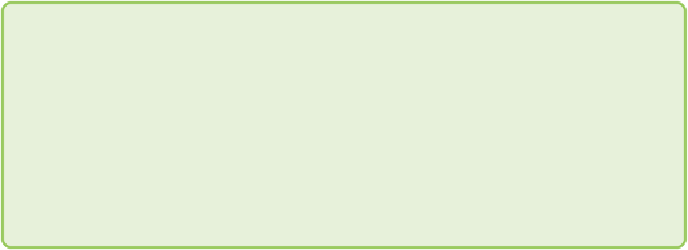Graphics Reference
In-Depth Information
evaluated first. The items that fulfill the criteria are then passed upward for
evaluation to the next filter in the hierarchy, until the root filter is reached.
In this case, the root filter (to be evaluated last) should constrain the visible
graph to those items that are linked in two degrees to Tufte's book. Because
all
productnodesinthesubgrapharewithintwodegreesofTufte'sbook,the
root filter will have no immediate effect, but once links begin to be removed
by date, it will serve to hide nodes that are no longer connected.
Find Ego Network under the topology filter grouping and drag it to the
Queries pane below it. The Ego Network filter constrains the set of visible
nodes to those connected to the specified focus node within a specified
number of hops. Enter the ID of
Envisioning Information
, and choose two
as the depth of the ego network, indicating a constraint of two degrees. You
can find the ID of the topic by clicking it with the edit selection tool to view
its properties or by selecting it in the Data Laboratory pane.
Note
You will often see the term
queries
or
dynamic queries
used
interchangeably with filters in academic visualization literature and
products.
Dynamic queries
is an old-school term that abstractly
describes an interactive, on-the-fly subselection of currently viewed
data based on criteria, in contrast to normal queries that select and
retrieve data from a data store based on the same. In practice, this is
more easily understood as
filtering
.
Expand the Ego Network filter so that its subfilter drop target is showing.
LocatetheRangefiltersunderAttributes,anddragadateconstraintintothe
Queries pane, adding it as a child of the Ego Network constraint. Turn on
the filter using the button below the pane to hide those linked nodes that do
not fall within the time range, as shown in
Figure 15-1
.

